Gemini is one of the 12 zodiac constellations, and it is located in the northern celestial hemisphere. The constellation of Gemini is among the 88 modern constellations, and it is associated with the twins, Castor and Pollux in Greek mythology.
Key Facts & Summary
- Gemini was among the 48 ancient constellations first listed by astronomer Ptolemy, in his 2nd century Almagest.
- The zodiacal constellation of Gemini remains one of the 88 modern constellations, being the 30th largest in the sky, occupying an area of 514 square degrees.
- The name Gemini comes from Latin, and it translates to twins. The constellation is associated with the mythological twin's Castor and Pollux in Greek mythology.
- The brightest star’s in Gemini bear the twin’s name, with Pollux being the brightest star in the constellation with an apparent magnitude of 1.14, while Castor is the second-brightest at 1.93.
- Pollux is the closest giant star to us, situated at only 34 light-years away, and it also has an exoplanet orbiting around it. Pollux is also the 18th brightest star in the night sky.
- Castor is the 23rd brightest star in the night sky, and it is actually a star system comprised out of two A-class main-sequence stars, an Am star, and three other stars.
- Currently, around 8 stars have been confirmed to host planets in Gemini.
- There is only one Messier object in the constellation of Gemini, the open cluster Messier 35.
- Two meteor showers are associated with Gemini, the Geminids, and the Rho Geminids.
- Other noteworthy stars in Gemini are Alhena, Wasat, Mebsuta, Mekbuda, Propus, Kappa Geminorum, Nu Geminorum, 38 Geminorum, U Geminorum, or Tejat.
- Several interesting deep-sky objects are present in Gemini, such as the Eskimo Nebula, the Medusa Nebula, the Jellyfish Nebula, or the open cluster NGC 2158, and neutron star Geminga.
The zodiacal constellation of Gemini is among the first constellations listed by the Greco-Roman astronomer, Ptolemy. In Greek mythology, the constellation of Gemini was associated with the twin's Castor and Pollux.
Even the name, Gemini, translates to twins, from Latin. The mythological twins were the children of Leda, a Spartan queen, and they are also associated with the Argonauts.
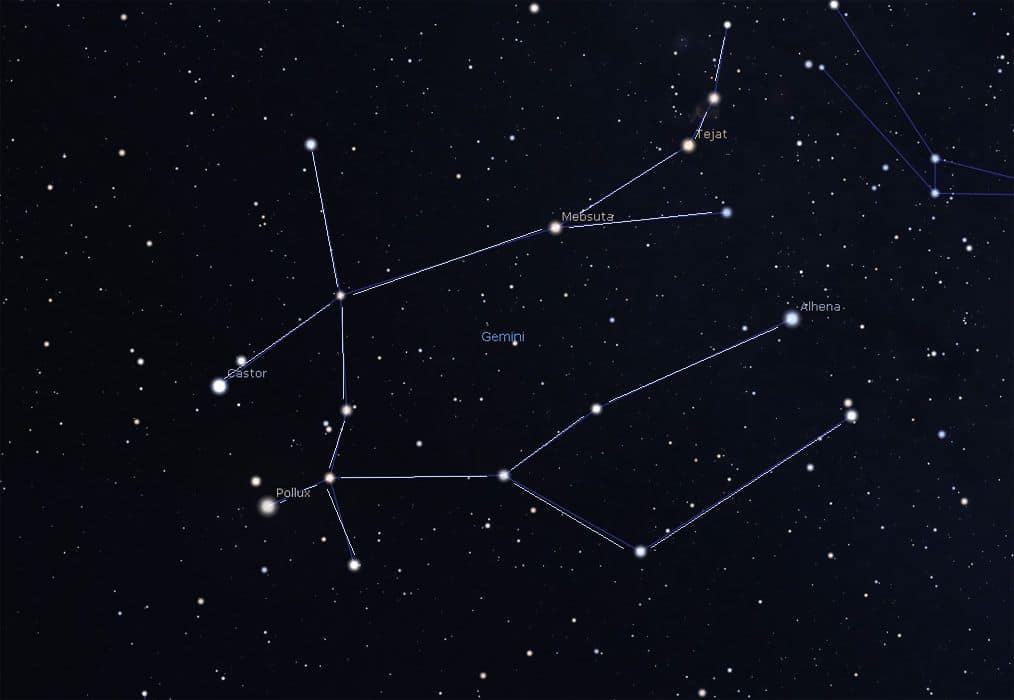
Pollux was the son of Zeus, who seduced Leda, while Castor was the son of Tyndareus, the king of Sparta and Leda’s husband. When Castor, the mortal brother, died, Pollux begged his father Zeus to give his brother immortality, and Zeus did so, uniting them in the heavens.
The two brightest stars in Gemini, Pollux, and Castor are often associated with many tales of brothers. Gemini is the northernmost of the zodiacal constellations and among the brightest.

Location
The zodiacal constellation of Gemini is the 30th largest constellation in the sky. Gemini spreads out for over 514 square degrees. The constellation of Gemini is located in the northern hemisphere, lying in the second quadrant of the northern hemisphere (NQ2), being visible at latitudes between +90o and -60o.
- Right Ascension: 7h
- Declination: +20o
- Visible: between +90o and -60o
- Best viewed: at 21:00 (9 p.m.) during February
The constellation of Gemini is bordered by Auriga, Cancer, Canis Minor, Lynx, Monoceros, Orion, and Taurus. Gemini is part of the zodiac family of constellations together with Aries, Taurus, Cancer, Leo, Virgo, Libra, Scorpius, Sagittarius, Capricornus, Aquarius, and Pisces.
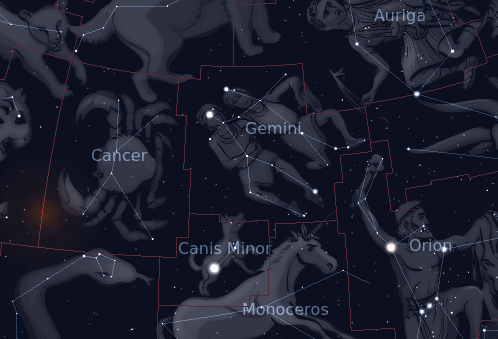
Messier Objects
Only one Messier object is present in the constellation of Gemini, the famous open cluster, Messier 35.
Messier 35
Messier 35, also designated as NGC 2168, is an elongated open cluster that has a radius of around 11 light-years. Messier 35 is located at 3,870 light-years away from Earth, and it was discovered in 1745 by astronomer Phillippe Loys de Chesaux.
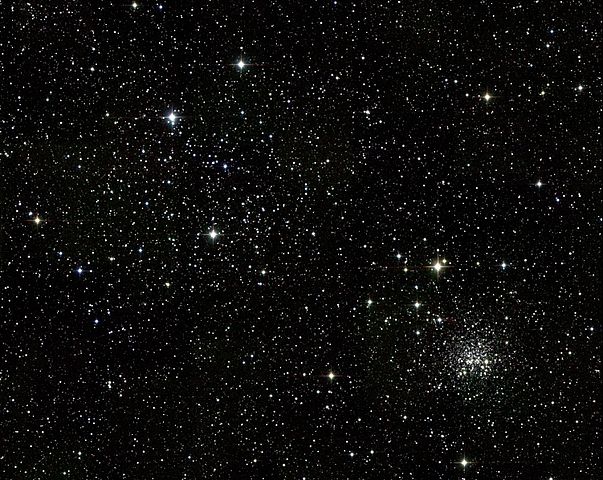
Messier 35 has an apparent magnitude of 5.1, and it can easily be resolved in small telescopes. The apparent dimensions of this open cluster have been estimated at around 28 arcminutes.
The compact cluster NGC 2158 lies directly southwest of Messier 35. M35 is believed to be around 175 million years old, containing around 1,600 solar masses.
Notable Stars
The constellation of Gemini hosts many interesting stars, however, the stars Pollux and Castor dominate the constellation, with Pollux being the brightest member in Gemini.
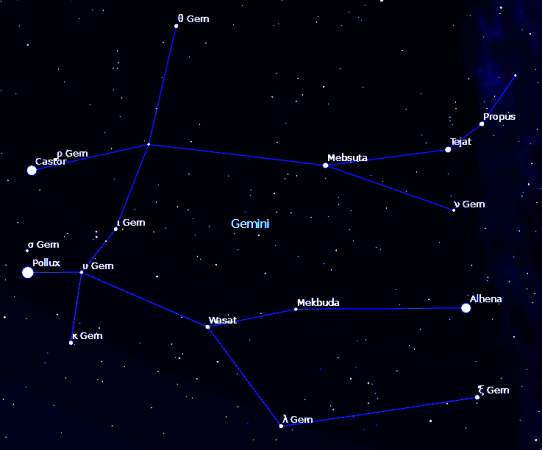
Pollux
Pollux, designated as Beta Geminorum, is the 18th brightest star in the night sky, and the brightest in Gemini with an apparent magnitude of 1.14.
Pollux is an evolved giant star, appearing orange-hued, and it is the closest giant star to our Sun, located at only 33.78 light-years away from our Solar System.
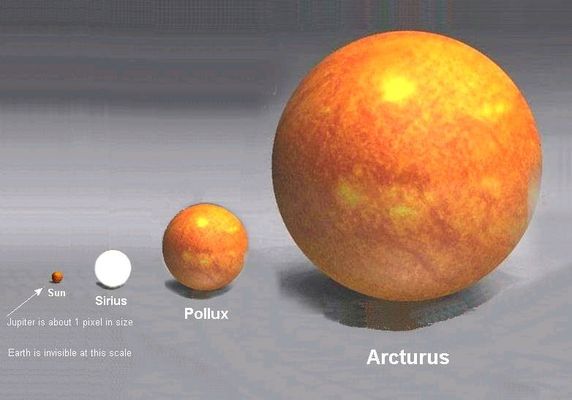
Pollux has around 191% of our Sun’s mass, 906% of its radius, and it is 32.7 times brighter than our Sun. Despite its impressive feats, Pollux is actually cooler than our Sun, having temperatures of around 4,586 K.
Since 1943, the spectrum of Pollux has served as one of the stable anchor points by which other stars are classified. In 2006, an exoplanet designated as Pollux b, has been confirmed to orbit the giant star.
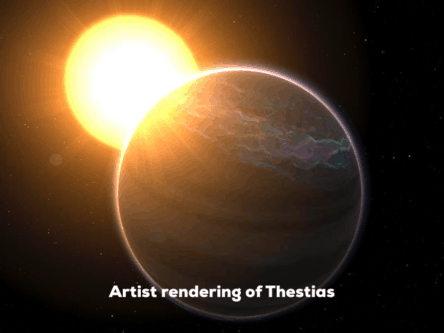
Pollux b has an estimated mass of around 2.3 times that of Jupiter. It orbits the giant star once every 590 days. Many cultures around the world associated Pollux and Castor as two of something, such as Yin and Yang, two gazelles, two-kid goats, the brothers that founded Rome, Romulus, and Regulus, and so on.
Among the 58 stars selected for celestial navigation, Pollux is the only one listed from Gemini. Pollux along with Capella, Aldebaran, Sirius, and Procyon are part of the winter asterism known as the Winter Circle or Winter Hexagon.
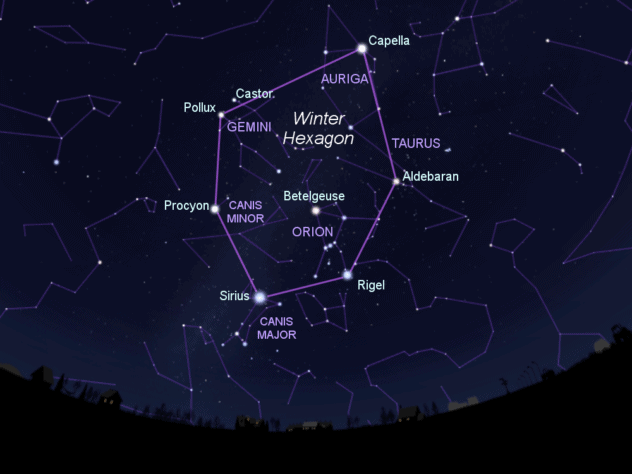
Castor
Castor, also designated as Alpha Geminorum, is the second-brightest star in Gemini, situated at around 51 light-years away from Earth. Castor has an apparent magnitude of 1.93.
Castor is a multiple star system, with around six confirmed members. The most prominent are two A-class main-sequence stars that have red dwarf companions.
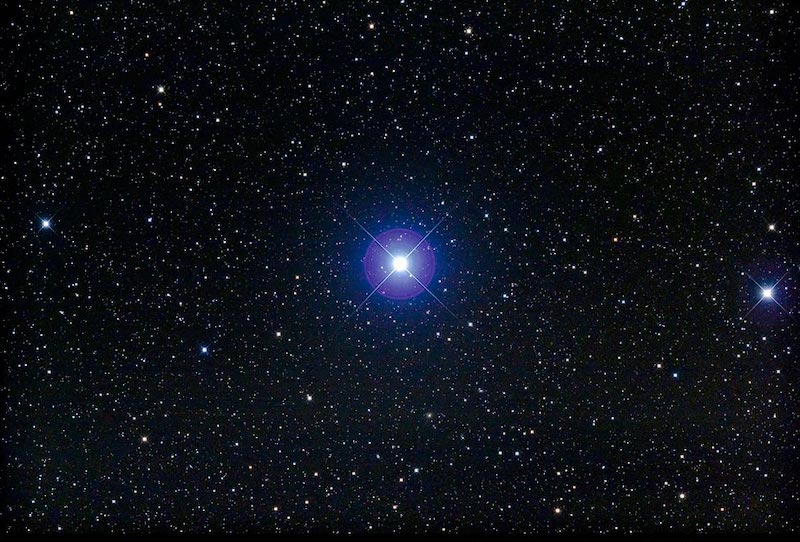
Alpha Geminorum Aa has around 276% of our Sun’s mass, 240 of its radius, and it is twice as hot, with temperatures of around 10,286 K. Alpha Geminurom Ba is the largest star in this system, it has 298% of our Sun’s mass, 330% of its radius, and surface temperatures of around 8,842 K.
The Castor star system is the 23rd brightest star/object in the night sky.
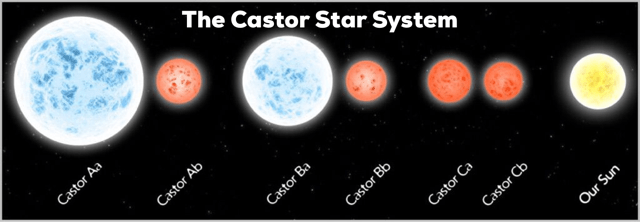
Alhena
Alhena, designated as Gamma Geminorum, is a blue evolving star, being the third brightest star in Gemini, located at around 109 light-years away.
Alhena has an apparent magnitude of 1.9, being 123 times brighter than our Sun. This star has exhausted its hydrogen supplies and has entered the subgiant stage.
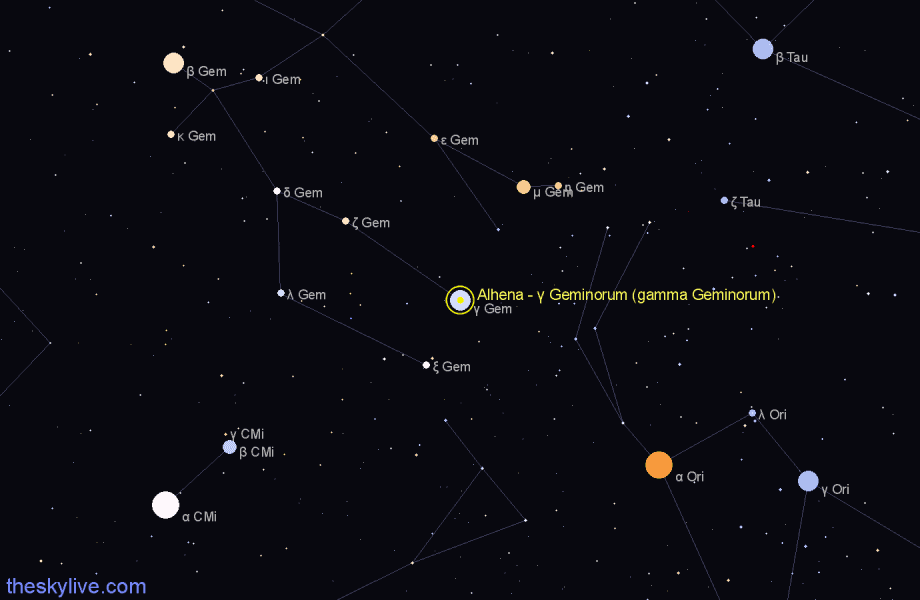
Alhena has around 281% of our Sun’s mass, 330% of its radius, and it is very hot, with surface average temperatures estimated at around 9,260 K.
Wasat
Wasat, designated as Delta Geminorum, is a triple star system in Gemini, comprised out of a subgiant star, a cooler K-type companion, while the third remains hard to be resolved and established.
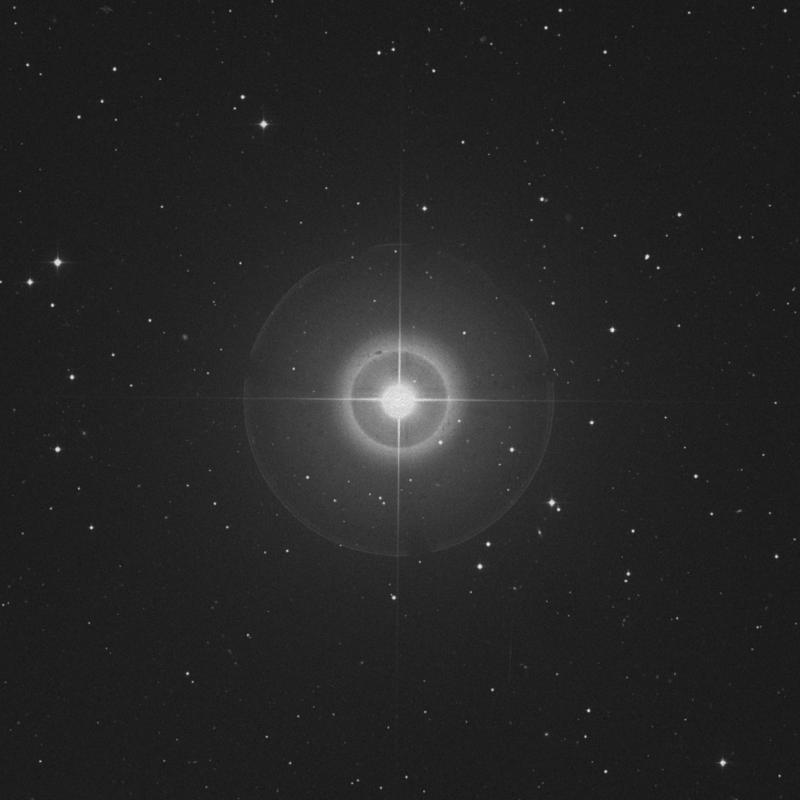
Wasat has a combined visual magnitude of +3.53, with the primary star having 157% of our Sun’s mass, while it is also hotter, with temperatures of around 6,900 K. Wasat is situated at around 60.5 light-years away.
Mebsuta
Mebsuta, designated as Epsilon Geminorum, is a yellow supergiant star located at around 840 light-years away from us. It has an apparent magnitude of +3.06.
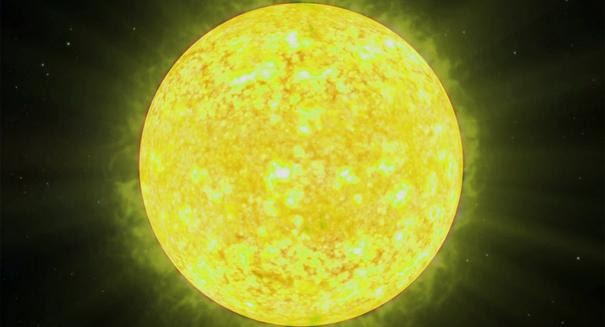
Mebsuta is truly gigantic, having around 1,920% of our Sun’s mass, a whopping 14,000% of its radius while being 8,500 times brighter than our Sun.
Mekbuda
Mekbuda, designated as Zeta Geminorum is a bright classical Cepheid variable star, having an apparent magnitude of 3.93, while varying from 3.68 to 4.16 over a period of 10.148 days.
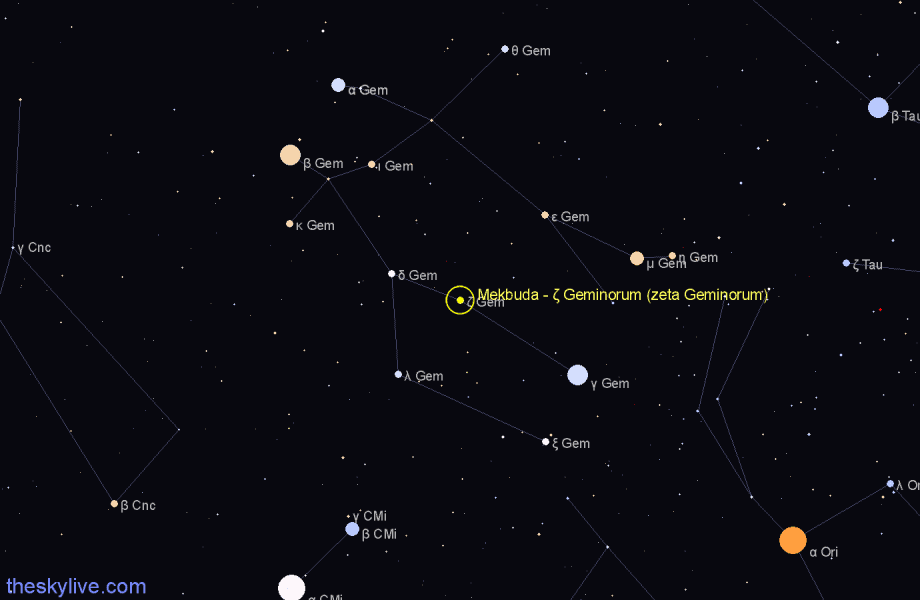
Mekbuda is located at around 1,120 light-years away from us. This star has around 770% of our Sun’s mass, 6,524% of its radius, and it is overall around 2,900 times brighter.
Propus
Propus, designated as Eta Geminorum, is a triple star system in Gemini situated at around 700 light-years away from us. This system has an apparent magnitude of 3.15.

The primary star, Propus Aa, is a highly evolved cool luminous star, that has around 250% of our Sun’s mass, 31,400% of its radius, and it is 12,823 times brighter than our Sun.
Tejat
Tejat, also designated as Mu Geminorum, is the fourth brightest star in Gemini, with an apparent magnitude of 2.857. This giant star is located at around 230 light-years away from us.
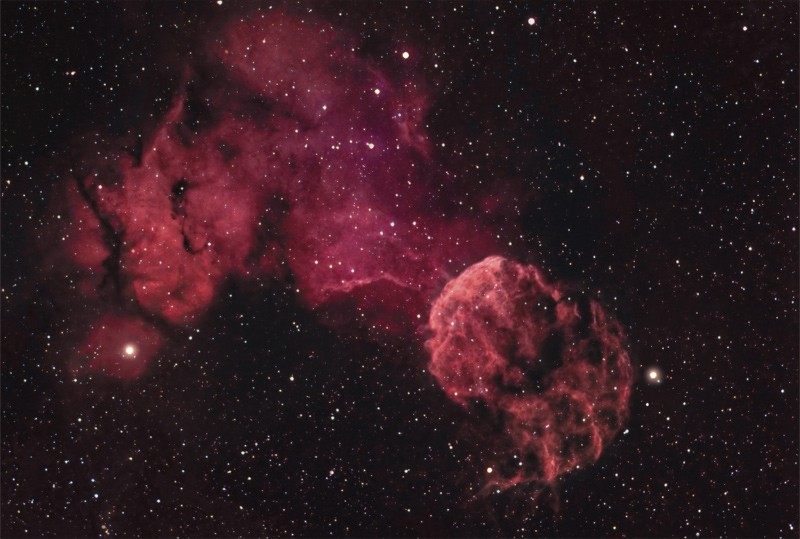
Tejat has around 210% of our Sun’s mass, 8,000% of its radius, and it is 1,148 times brighter than our Sun. Due to its size, the star is cooler than our Sun, having temperatures of around 3,460 K.
Kappa Geminorum
Kappa Geminorum is a binary star system in Gemini, located at around 141 light-years away from us. The primary star has an apparent magnitude of 3.568, while the second is an eight magnitude star.
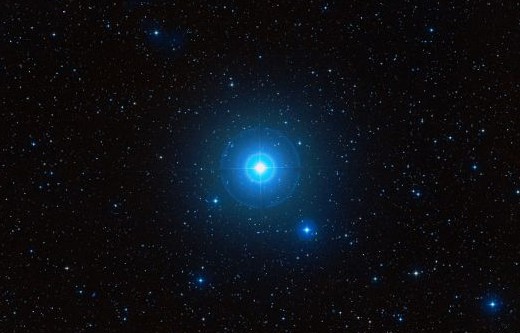
Kappa Geminorum has around 207% of our Sun’s mass, 1,100% of its radius, and it is 67.6 times brighter than our Sun. Since 1943, it’s spectrum has served as one of the stable anchor points by which other stars are classified.
Nu Geminorum
Nu Geminorum is a binary and possibly a multiple star system in Gemini, located at around 540 light-years away. It has an apparent magnitude of 4.16.
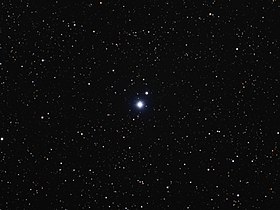
The primary star, Nu Geminorum Aa, has around 640% of our Sun’s mass, it is 1,1380 times brighter, and almost three times as hot, with temperatures of around 14,100 K. The only thing currently known about Nu Geminorum Ab, is that it has around 460% of our Sun’s mass.
38 Geminorum
38 Geminorum, also known as e Geminorum, is a binary star in Gemini, with the primary star, A, located at around 96 light-years away, while B, at 97.9 light-years.
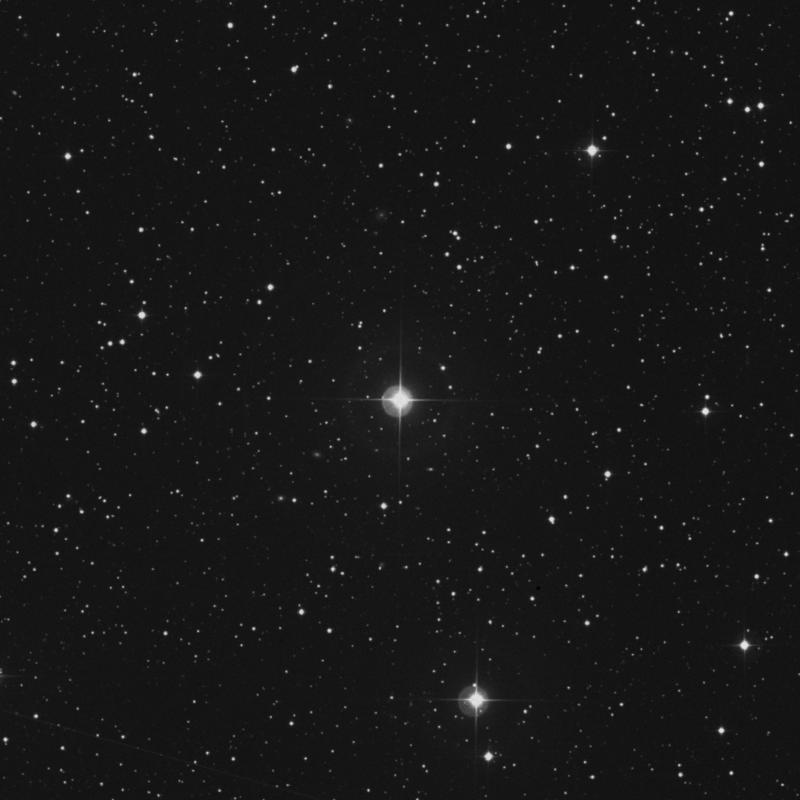
The apparent magnitude of A is 4.75, while B is at 7.80. The primary star is an A-type main-sequence star that has around 155% of our Sun’s mass, and it is also a suspected chemically peculiar star.
The secondary star is a G-type main-sequence star that is smaller than our Sun, having only 89% of its mass and radius.
U Geminorum
U Geminorum is a binary star system consisting of a white dwarf that is closely orbiting a red dwarf. It is an archetypal example of a dwarf nova.
U Geminorum is located at around 304.5 light-years away from us, with the primary component having an apparent magnitude of 8.2, while the secondary, 14.9.
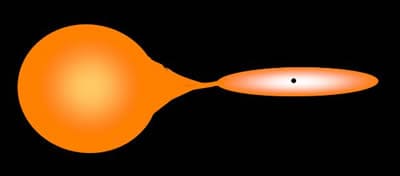
The two components orbit each other once every 4 hours and 11 minutes, which makes them vary in brightness due to eclipses. The white dwarf is the main-component, having 120% of our Sun’s mass, and only 0.008 of its radius, however, it is 5 times hotter than our Sun, having temperatures of around 29,200 K.
The companion red dwarf is also much smaller than our Sun, having only 42% of its mass, and around 43% of its radius.
Deep-sky Objects
Several interesting deep-sky objects are present in Gemini, such as the Eskimo Nebula, the Medusa Nebula, the Jellyfish Nebula, the open cluster NGC 2158, or the neutron star Geminga among others.
The Eskimo Nebula
The Eskimo Nebula, also known as the Clownface Nebula or Caldwell 39, is a bipolar double-shell planetary nebula in Gemini, situated at around 6,520 light-years away.
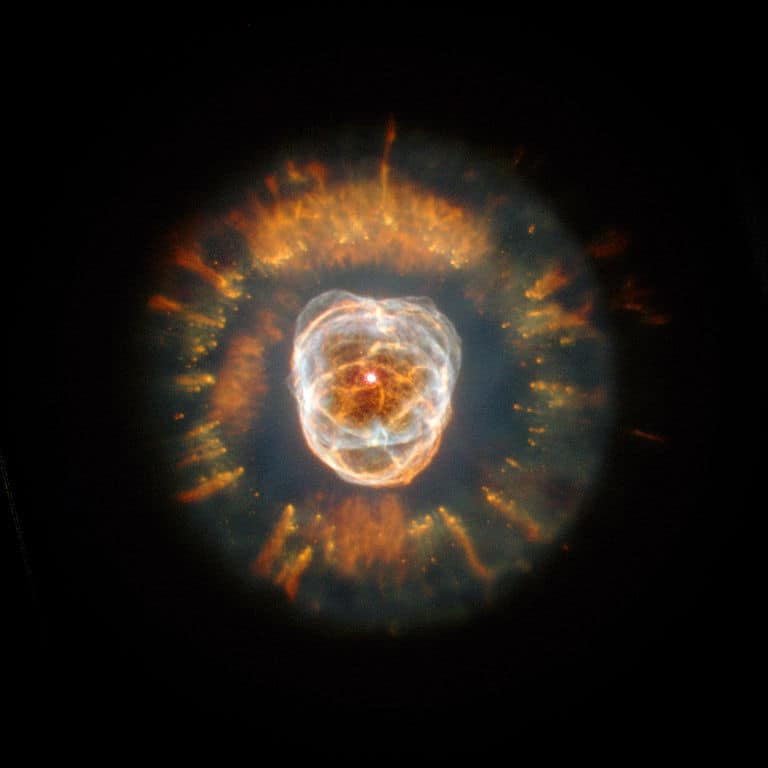
The Eskimo Nebula has an apparent magnitude of 10.1, having a radius of around 0.34 light-years. It is visible within small telescopes. This nebula was discovered by William Herschel in 1787.
The nebula resembles a person’s head. The outer gas that expands into space was once part of the layers of a Sun-like star.
The Medusa Nebula
The Medusa Nebula, also known as Abell 21 or Sharpless 2-274, is a planetary nebula in Gemini first discovered in 1955 by astronomer George O. Abell.
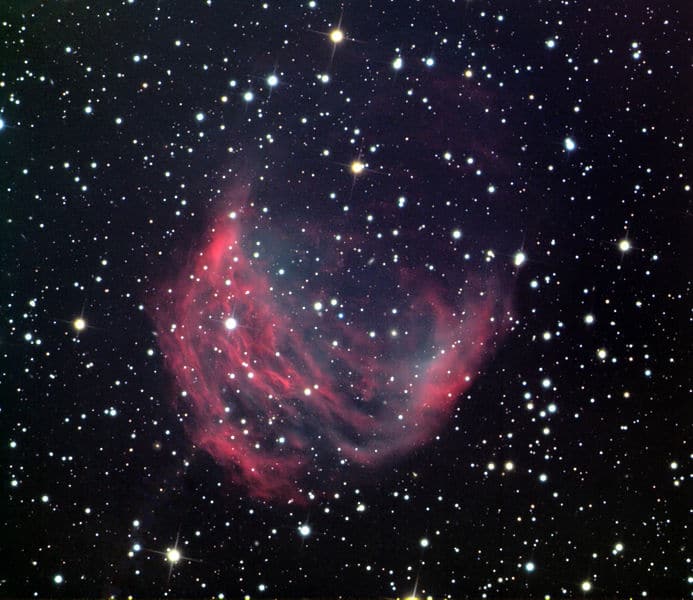
The Medusa Nebula is located at around 1,500 light-years away, stretching for around 4 light-years, having an apparent magnitude of 15.99.
The Jellyfish Nebula
The Jellyfish Nebula, also known as IC 443 or Sharpless 248, is a galactic supernova remnant in Gemini located near the star Propus/Eta Geminorum, at around 5,000 light-years away from Earth.
The Jellyfish Nebula is thought to be the remnant of a supernova that occurred between 3,000 to 30,000 years ago, and it most likely created the neutron star CXOU J061705.3+222127, which is the collapsed remnant of the stellar core.
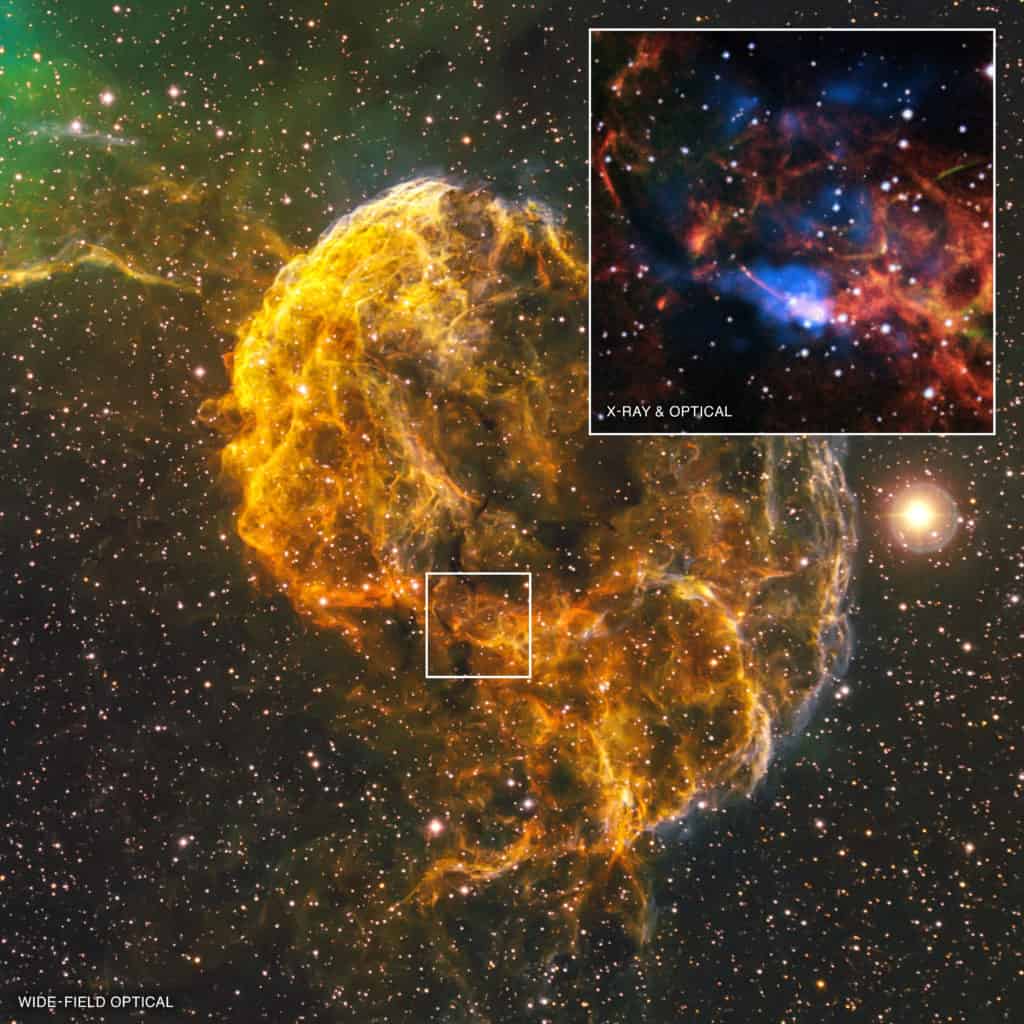
The Jellyfish Nebula has an angular diameter of around 50 arcminutes / 70 light-years, and one of its notable features is its interaction with the molecular clouds.
IC 444
IC 444 is a small reflection nebula in Gemini. It stretches out for around 32 square arcminutes. IC 444 has an apparent magnitude of 7.03.
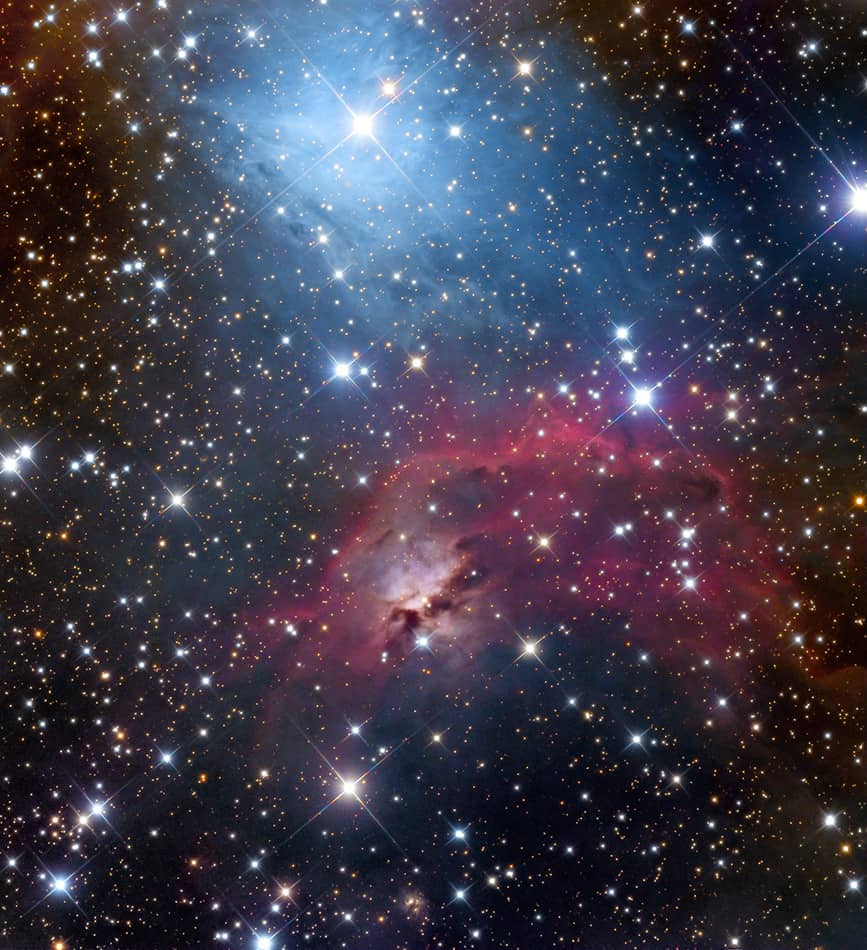
Geminga
Geminga is a neutron star in Gemini located at around 815 light-years away from us. Geminga is possibly the collapsed remnant of a stellar core, resulted from a supernova explosion that occurred around 300,000 years ago.
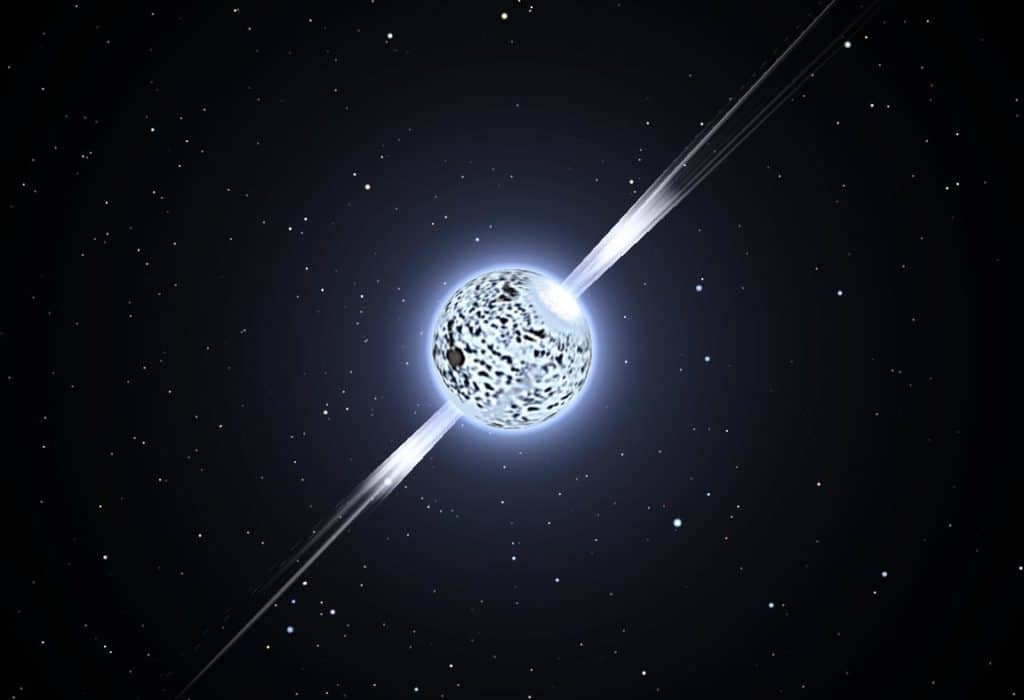
Geminga has an apparent magnitude of 22.5. It was the first unidentified gamma-ray source to be discovered, as well as the first example of a radio-quiet pulsar.
NGC 2158
NGC 2158 is an open cluster in Gemini which is situated southwest of the open cluster Messier 35. This open cluster is believed to be 2 billion years old.
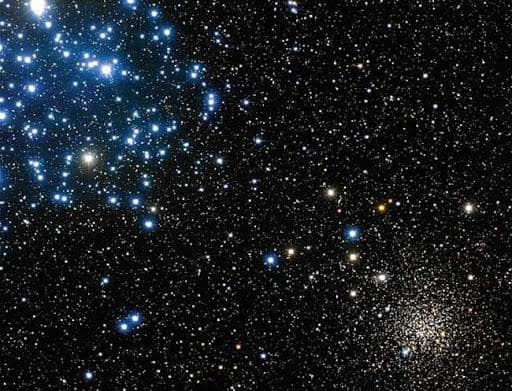
NGC 2158 is located at more than 11,000 light-years away from us, stretching for around 5 arcminutes. It has an apparent magnitude of 8.6 and a radius of around 8 light-years.
NGC 2129
NGC 2129 is an open cluster located at around 7,200 light-years away from us, located inside the Local Spiral arm, of the Milky Way. This cluster is quite young, having an estimated age of around 10 million years.
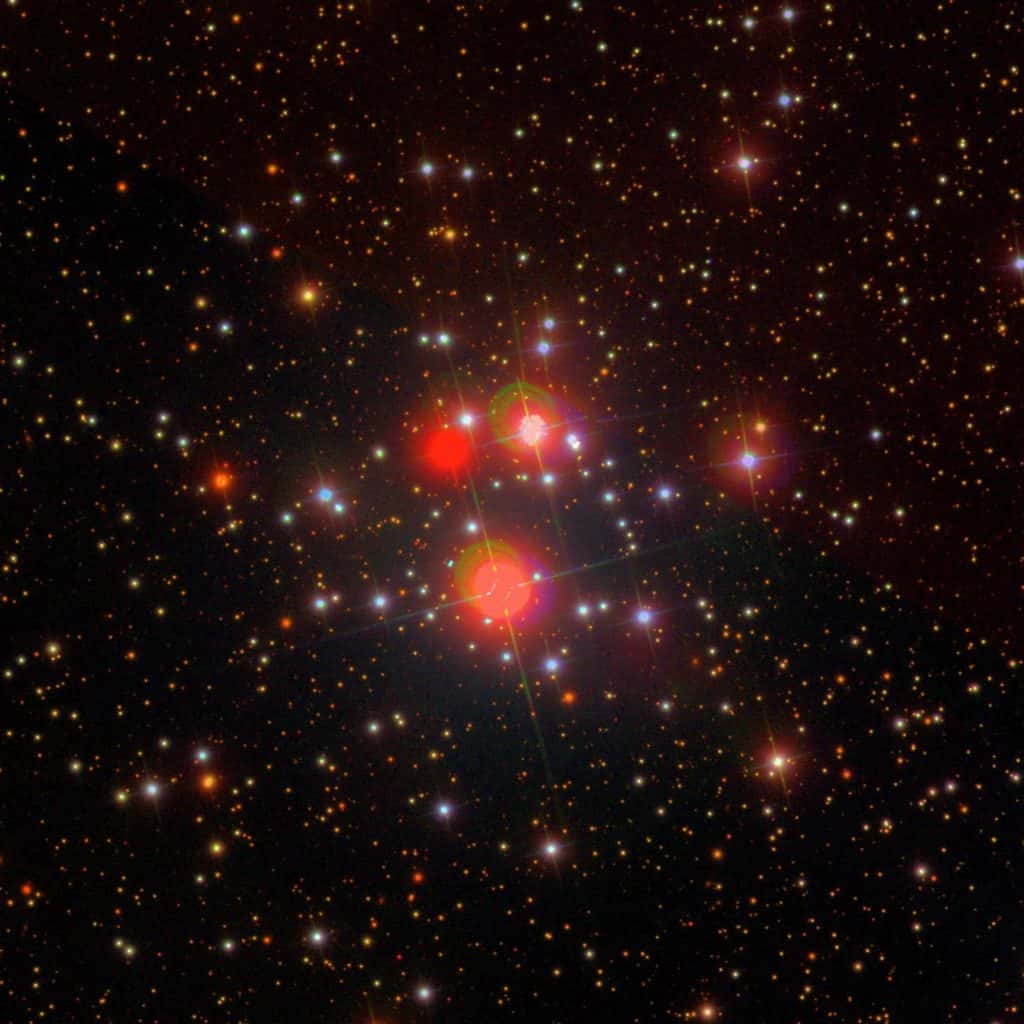
NGC 2129 has an estimated radius of around 5.2 light-years and an apparent magnitude of 6.7. The group is dominated by two close B-type stars.
NGC 2355
NGC 2355 is an old open cluster, being around one billion years old. It is located at around 5,400 light-years away from us, and at around 1,100 light-years above the plane of the Milky Way.
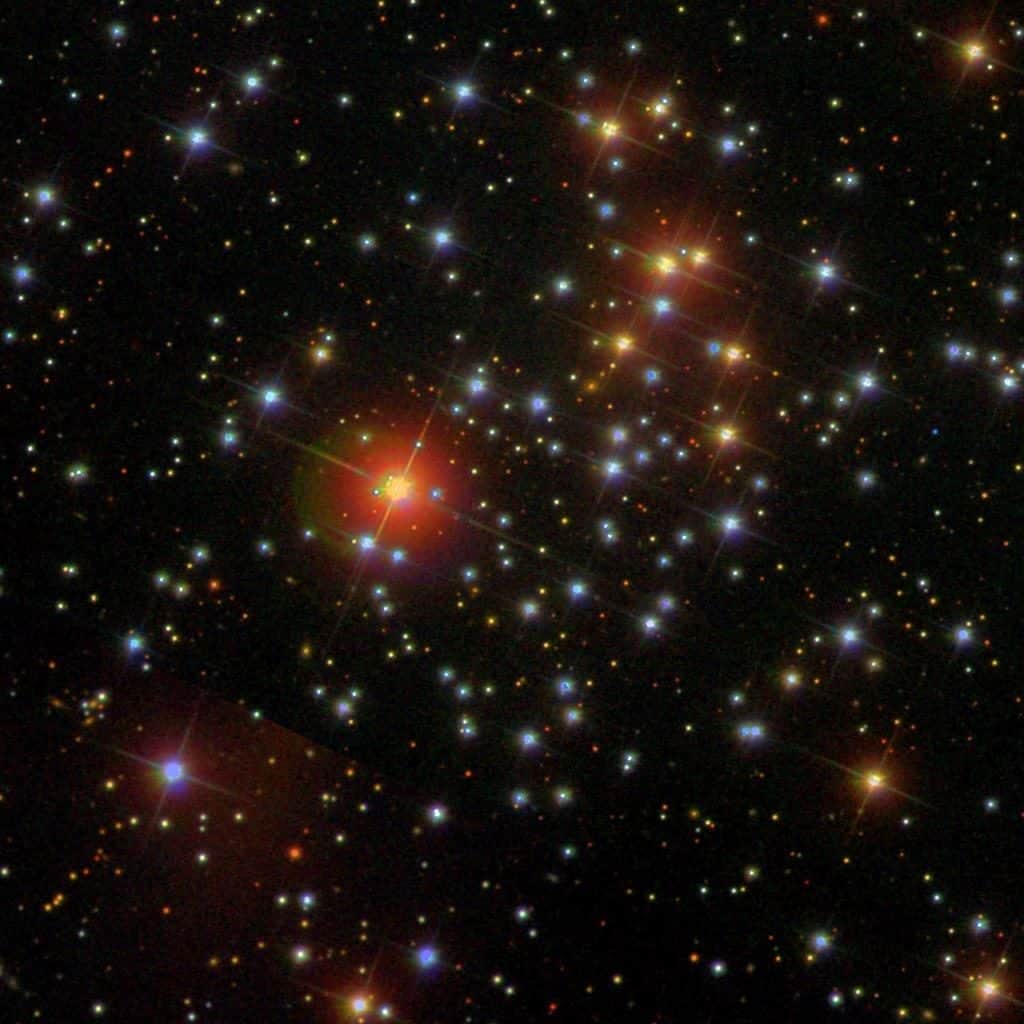
The angular size of the cluster halo is estimated at a radius of around 23 light-years, while the core radius is 2.3 light-years, and the central component radius is 11 light-years.
NGC 2355 has an apparent magnitude of 9.7, and overall apparent dimensions of 5 arcminutes.
Meteor Showers
The constellation of Gemini is associated with two prominent meteor showers, the Geminids, and the Rho Geminids. The Geminids are very bright, peaking on December 13-14.
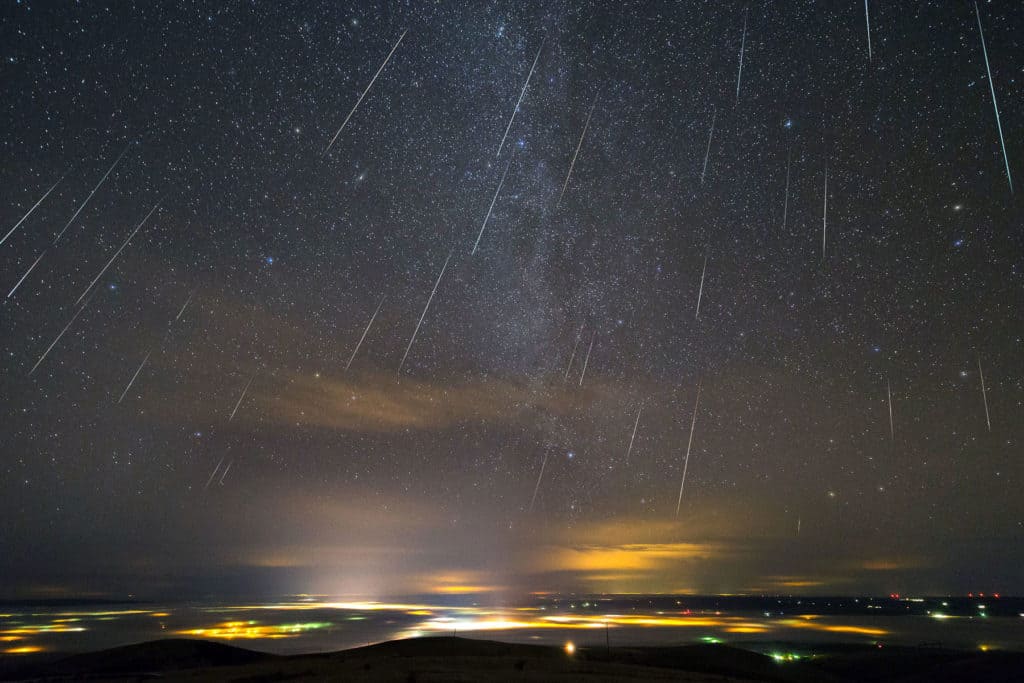
Around 100 meteors per hour have been recorded during their peak, making the Geminids one of the richest meteor showers. The Rho Geminids peak between October 18 and October 29, they overlap with the Orionids, and this makes them difficult to detect, however, they have a higher velocity than the Orionids.
Astrology
As of 2002, the Sun appears in the constellation of Gemini from June 21 to July 20. In tropical astrology, the Sun is considered to be in the sign Gemini from May 21 to June 22, and in sidereal astrology, from June 16 to July 15.
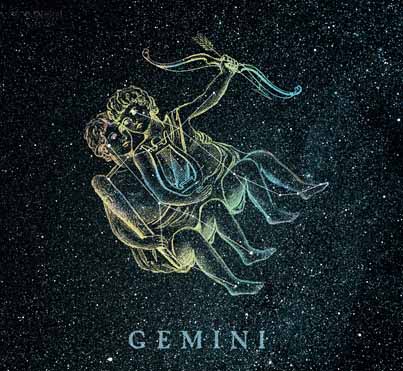
Did you know?
- In Chinese astronomy, the stars of Gemini are located in two areas: the White Tiger of the West, and the Vermillion Bird of the South.
- When the planet Uranus was discovered in 1781 by William Herschel, it was located near Propus / Eta Geminorum.
- Similarly, in 1930 when Clyde Tombaugh exposed a series of photographic plates centered on Propus / Eta Geminorum, he discovered the dwarf planet Pluto.
- In Babylonian astronomy, the stars Castor and Pollux were known as the Great Twins. They were regarded as minor gods and were called Meshlamtea and Lugairra – meaning “The One Who had arisen from the Underworld” and the “Mighty King”.
- Both the Meshlamtea and Lugairra names associated with the two brightest stars of Gemini can be understood as titles of Nergal, the major Babylonian god of plague and pestilence, who was king of the Underworld.
Sources:
Image Sources:
- https://www.thoughtco.com/thmb/iMYoREJMxWXQbINu-_TFAeHOiRQ=/1014x700/filters:fill(auto,1)/gemini-5851b2035f9b586e02590789.jpg
- https://upload.wikimedia.org/wikipedia/commons/thumb/4/44/Sidney_Hall_-_Urania%27s_Mirror_-_Gemini.jpg/640px-Sidney_Hall_-_Urania%27s_Mirror_-_Gemini.jpg
- https://in-the-sky.org/images/constellations/con_GEM_000.png
- https://upload.wikimedia.org/wikipedia/commons/thumb/1/12/M35atlas.jpg/603px-M35atlas.jpg
- https://cf.ltkcdn.net/horoscopes/images/std/220626-542x450-Stellarium.png
- https://lh3.googleusercontent.com/-Fznw-w290FA/W4USQ5AZ1nI/AAAAAAAACA0/RMymdoabFXUfDdOUgHjPPhoZ8QcHPrgPQCHMYCw/w1200-h630-p-k-no-nu/sun-sirus-pollux-arcturus.jpeg
- https://ualr.edu/tv/files/2019/12/THESTIAS-444x333.png
- https://skyandtelescope.org/wp-content/uploads/Winter-Hexagon-632x474-1.png
- https://earthsky.org/upl/2020/02/Castor-by-Espenak.jpg
- https://ualr.edu/tv/files/2019/12/CASTOR-STAR-SYSTEM.png
- https://theskylive.com/sky/stars/finder-charts/alhena-gamma-geminorum-finder-chart.png?c=1586695693
- https://theskylive.com/sky/stars/star-images/27/2777_800.jpg
- https://imgprx.livejournal.net/39068556c5286721db32f3a0417929e5f4cfccb9/rLQbBTJjEmkryWZTMOY0RYjSjUuYNLx2FOctnF8paya_6U3mwDbCS_eNMOg244zGhZXk5QBniAUo0xgVoQgSwOMN_B-q0kYbV5-WYN2eHxO8IbYCad38kyXmejASSY-3
- https://theskylive.com/sky/stars/finder-charts/mekbuda-zeta-geminorum-finder-chart.png?c=1586781166
- https://i.pinimg.com/originals/d0/bf/9f/d0bf9fbc0752af9bd7d0e9a1cfa1289e.jpg
- https://upload.wikimedia.org/wikipedia/commons/thumb/1/14/Ic443_wide.jpg/480px-Ic443_wide.jpg
- https://upload.wikimedia.org/wikipedia/it/c/c1/Kappa_Geminorum.jpg
- https://upload.wikimedia.org/wikipedia/commons/thumb/1/11/Nu_Geminorum.jpg/280px-Nu_Geminorum.jpg
- https://theskylive.com/sky/stars/star-images/28/2886_800.jpg
- https://astronomy.swin.edu.au/cms/cpg15x/albums/userpics/ugeminorumstars.jpg
- https://upload.wikimedia.org/wikipedia/commons/thumb/1/16/Ngc2392.jpg/768px-Ngc2392.jpg
- https://upload.wikimedia.org/wikipedia/commons/thumb/0/0b/Medusa_nebula.jpg/693px-Medusa_nebula.jpg
- https://www.nasa.gov/sites/default/files/thumbnails/image/ic443.jpg
- https://upload.wikimedia.org/wikipedia/commons/f/f0/Ic444s.jpg
- https://orionsarm.com/im_store/geminga.jpg
- https://lh3.googleusercontent.com/proxy/jyWknnCHPcJlLWapns_mWTwB-ZLM7-r63KVB_PFUQXiGUhJj1wQE1WssBIbrL5waZFymiTAHPPwXAZrlHfHzxllCTwyvWWknxqO82cNLhO-2QIS2DA55JN4
- https://upload.wikimedia.org/wikipedia/commons/d/d8/NGC2129_-_SDSS_DR14_%28panorama%29.jpg
- https://upload.wikimedia.org/wikipedia/commons/5/50/NGC2355_-_SDSS_DR14_%28panorama%29.jpg
- https://www.universetoday.com/wp-content/uploads/2014/12/geminids_edited-1.jpg
- https://www.crystalinks.com/geminirb.jpg
